Revisiting our Fantasy Football Exploration
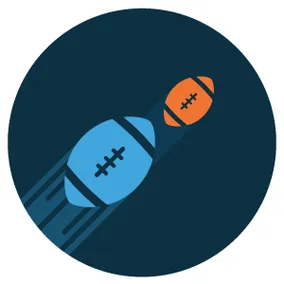
Jason Toth, Former Experience Design Director, and
Ben Eckerson, Former Senior Digital Strategist
Article Categories:
Posted on
Reconsidering our fantasy football exploration from 2015, Viget reflects on new trends in fantasy sports.
In 2015 Viget launched one of our most popular explorations around the future of fantasy football. As avid fans and players, we were interested in exploring the intersection of three of our biggest passions: technology, experience design, and sports. Our goal was to consider improvements to the fantasy football interfaces as well as concepts to push the fantasy experience beyond the screen. Through our research we specifically focused on designs for a more immersive draft experience, enhanced league communications, and better access to more statistical analysis. Two years has passed and the fantasy landscape is still booming with no signs of slowing down. As we start our 6th season of fantasy football at Viget we decided to dust off the ole exploration from the trophy shelf and see whether or not our ideas still hold water—or gatorade—or, well, you get the point.
Looking back, what began as a “wouldn’t it be great if…” exploration garnered positive and validating feedback asking if Viget was building out this experience as a new fantasy app. We were a bit overwhelmed with how many people really wanted to use this interface and the concepts we proposed. While the development of a new fantasy app was not necessarily (and is not) an immediate goal of our exploration, it did provide evidence that the 56 million fantasy players across the US and Canada care deeply about their fantasy experience and desire an experience that more closely matches their mature digital expectations.
A BRIEF HISTORY of FANTASY FOOTBALL
To understand the social expectations of fantasy players it’s important to understand the history of the fantasy experience. Fantasy sporting was born 55 years ago in Oakland from of a cocktail of sport fanaticism and statistical geekery. Drafts were completed in-person (often as full day events or parties), notepads and rulebooks were the recorders, and calculations each week were manually calculated by the league commissioner—the experience was as social as it was competitive. Yes, there was a strong analytical emphasis to the game, but it was surrounded by the social and emotional characteristics of a bowling league.
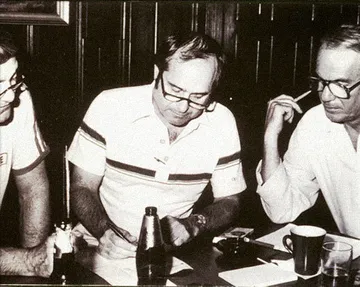
The experience eventually found its way on the web in the mid-90s and broadened the appeal with new possibilities. No longer bound by geographic proximity, leagues could be formed with players across the country and drafts, calculations, and statistics could be automated in real time. Twenty years later, fantasy interfaces have adapted and evolved with new technologies, but the emphasis has mostly been on analytics and ubiquitousness.

Which brings us back to our fantasy exploration and considerations around what’s next for the fantasy experience. The debate on the best fantasy application is common water cooler fodder (and largely just a personal preference), but the feedback from our exploration did make us realize that users are quite savvy about digital. Ignoring the highly customizable experience sought by power users, most players really just want a fantasy experience that’s reflective of their everyday digital experiences.
More specifically, they’re seeking an experience full of social interactions, crowdsourced decision making, rich data visualizations, unique insights, and an experience that provides immediate enhancement of the live game through their virtual league. Surveying the industry again, we feel confident saying that our exploration and proposed features are still relevant in these areas. There’s still no single application that addresses all of these ideas, but we’re definitely seeing feature movement towards the sentiments we outlined in our work.
CURRENT TRENDS
Beyond this, we see three major areas of focus emerging in fantasy sports. These are marginally related to the broad themes we outlined in our exploration, and in many ways, reflective of the digital marketing industry as a whole. In no particular order, they are:
- Diversified Content
- Social Experiences
- Micro/In-Game Fantasy
DIVERSIFIED CONTENT
The trends in fantasy content aren’t all that different than broader trends in content consumption. To say that “content is king” in fantasy would be an understatement. One could even argue that it is becoming one of the biggest differentiators in fantasy platforms (i.e. the provider’s ability to distribute and integrate unique fantasy content and analysis into their platform or channels). All of the major platforms are looking for every possible way to both create proprietary content and deliver it through their own unique mediums (devices, podcasts, user-generated, data-visualizations, etc.).
Consider the amount and range of content that ESPN is rolling out for the 2017 fantasy football season across all of their platforms—daily podcasts, 24 hour fantasy commentary, weekly recurring editorials, paid insider analysis, proprietary metrics and video analysis, tv programming, radio programming, expert chat access, and even fantasy conventions. This isn’t just a few tables of data to glance over each week and an article to read in your leisure. Players are consuming content from every angle and major content creators are providing it across every medium.
What was a fifteen minute commitment per week to set a line-up has turned into an all-consuming fantasy experience from every medium. Analysis and insights still reign supreme in weekly decision making and trading, but players don’t want to feel as if they are researching a term paper just to determine if player A or player B will lead them to victory. The experience itself needs to be more entertaining and distinct than academic, and people want it delivered within and outside of the platform.
Besides your traditional stats, graphics, and editorial content, here are a few highlights of distinct content delivery in fantasy:
- Alexa Hardware Integration
Platforms like Yahoo! Fantasy have now added a fantasy football skill to Alexa so you can use voice commands to interact with your fantasy roster and get fantasy updates during live games. Additionally, content providers like Fantasy Football Nerd have added skills that analyze potential trades and provide roster recommendations and news, while stat-based providers like Let’s Talk Fantasy Football and Fantasy Matrix have added Alexa skills that give you voice-command access to any potential stat for any player since 2001. Want to find out how many targets Larry Fitzgerald averaged in Week 3 road games against a divisional rival? Just ask Alexa.
- In-App Game Video Highlights
In one of the more intriguing content-related twists, the NFL.com will show their users, just-happened video highlights of NFL games as their fantasy players’ score. Not only will players get real-time notifications when their fantasy players earn them points, but they’ll be able to watch those scores happen (somewhat akin to having your personal DirectvRed Zone coverage of your fantasy game.) While it helps that they can leverage their ownership of this footage, it is certainly beginning to blur the line between fantasy and reality, and greater proof that investment in this kind of content experience is a key differentiator.
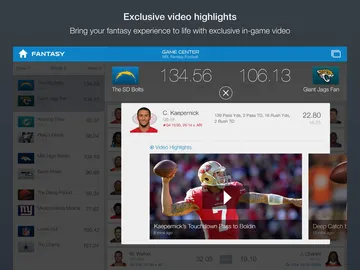
- Fleaflicker Charts
While Fleaflicker is a smaller platform, they are investing in unique content like comparative player charts. Using historical and in-season data, Fleaflicker visualizes your players performance against both the average and best players at this position. Armed with this information, owners can make more informed decisions on starting or cutting their players without multiple clicks to make similar observations.
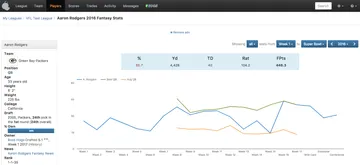
SOCIAL INTEGRATION
As mentioned earlier, fantasy sports is as much about competition, statistical geekery, and glory as it is about socialization and camaraderie. Choosing a team name is as much a show of pop-culture urbanity and social commentary as it is a vehicle for insider jokes and references among of shared community of participants. Just peruse Reddit and you’ll find people discussing topics from best team names to draft strategies to people sharing their own custom calculated cheat sheets. Once the season begins, these discussions will change into projecting new players to pick up or using tools on 3rd-party content sites like Fantasy Pros to determine who you should start. Whatever the case may be, the social aspects of the fantasy experience are as critical to the experience as delivering quality content and analytics. Otherwise, would people go to these lengths for their draft day experiences?

- Crowd-Sourced Decision Making
Crowd-sourced decision making is a staple in fantasy sports. Typically players have relied on 3rd-party sites for this informaiton, but the slightly newer platform offered by NFL.com has tapped into this behavior with their Fantasy Genius tool. Using the power of the crowd, their well-designed, dashboard-like interface presents thousands of user generated questions, answers, and polls through a variety of interactive components. All forms of prognostication are game while also tapping into the millions of hours of community knowledge in the process.
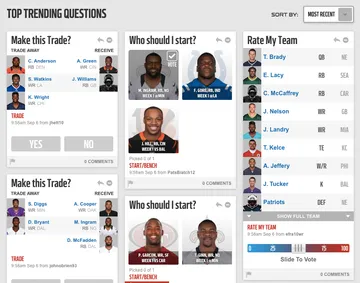
- GIF Love
Nothing says more with less than a well-timed gif. Yahoo! Fantasy knows this and recently introduced the ability to not only post these gems into an integrated chat application, but they’ve smartly provided keywords to the most common range of Sunday football watching emotions: winning, losing, gloating, crying, failing or just plain whatevering.

- Social Interaction Focus
Sleeperbot might be a newcomer to the fantasy world but they are putting great effort into maximizing social interactions within their app. They are aware that almost all of the fantasy experience is conducted on mobile and their choice to focus on the small screen experience distinguishes them from every competitor in the field. It’s well designed and modern with an integrated chat tool that is reminiscent of a fully featured application. Their approach to a mobile-first draftboard experience and new features like blockbuster trade support (to encourage more social interactions during the season) are steps towards a fantasy experience that encourages a range of game-day social interactions.
MICRO/IN-GAME FANTASY
In-game fantasy is not necessarily a trend that is featured in any major weekly fantasy platform up to this point, but there is movement towards more game-within-game, micro fantasy interactions. Fanamana has already built this technology/experience within baseball, and they are introducing a stand-alone experience for the NFL this fall. Additionally, start-ups like Pointstreak Sports Technologies are focused on using predictive contests to engage a younger, tech-savvy fan base as well as the more passive game watching fan. While this trend is more an extension of the overall growth of daily fantasy the implications or integration across all fantasy platforms has merit.
Short of interacting with their friends through social platforms and chat, the bulk of post-roster fantasy interactions are relatively passive. Players will check scores, watch highlights, and make a few minor roster tweaks, but largely they’re just consumers during the games. But what if additional, micro fantasy decisions could be introduced during this time? Additional fantasy decisions like in-game roster adjustments, predictions on player outcomes during specific moments in the game, or even predictions on outcomes within the fantasy match itself could result in additional points or prizes. This could potentially keep players even more actively engaged and keep them interacting with even more content throughout the entire fantasy experience.
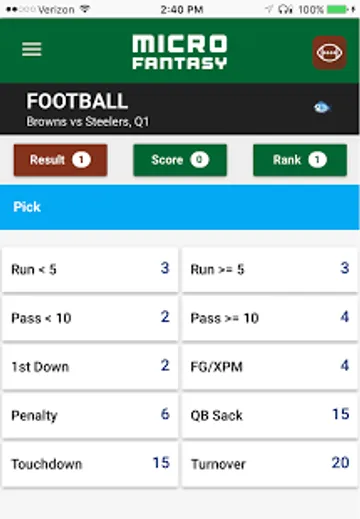
WRAP-UP
When considering the current state and interest areas for many fantasy platforms, our fantasy football exploration from 2015 is still surprisingly relevant (in that most tech-related visions become quickly obsolete). The overall experience of fantasy still centers on intriguing content, rich data presentation, and social interactions. Unfortunately there hasn’t been much improvement in reimagining the bookends of the experience (the draft and post-game) but given the concentration on the trends above, there’s hope that they will be integrated into those aspects of the experience soon. We might have been a bit wide-eyed to dream that one application might tackle (pun intended) all of these aspects in a single platform, but we’ll take progress nonetheless.
We love fantasy sports at Viget and couldn’t be more excited about the upcoming season. That being said, we do hope the future continues to acknowledge that fantasy, is well...fantasy. Our dream is that new features and ideas enhance the physical and social experience through the virtual, but do so in a responsible manner. Focusing on digital improvements that augment the social roots of the game are of the utmost imperative. We’re proud to craft enjoyable, responsible, and engaging experiences at Viget whether they’re centered on fantasy or a very strict reality, and we hope our contribution in this area will have that type of impact.